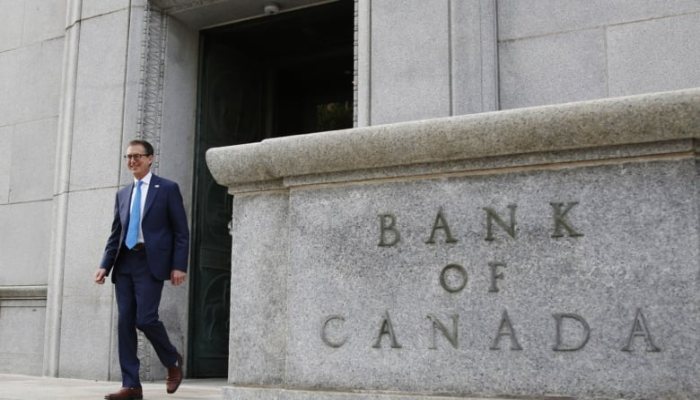Bank of Canada keeps benchmark rate at record low but economic outlook brightens
Bank forecasting a 6.5% increase in GDP growth in 2021, up from 4%
The Bank of Canada opted to keep its benchmark interest rate steady at a record-low 0.25 per cent Wednesday, saying the pandemic recovery “continues to require extraordinary monetary policy support.”
At the same time, it significantly increased its growth estimates, forecasting a 6.5 per cent increase this year, up from an earlier prediction of four per cent.
The bank said in a statement that it intends to hold the policy interest rate until the economy is recovered, possibly in the second half of 2022, moved up from an earlier prediction of 2023.
The improved outlook means the likelihood that borrowing costs will rise late next year has increased.
“The Bank of Canada has made a drastic U-turn in the space of three months from being extremely cautious to be being extremely upbeat,” Benjamin Reitzes, Canadian rates and macro strategist at BMO Capital Markets, said in a note to clients.
“While there’s still some ways to go until we get a move on rates, the Bank has taken the first step toward exiting [quantitative easing], in what is clearly a more hawkish statement than markets anticipated.”
The central bank expects economic growth to temper to 3.7 per cent next year and 3.25 per cent the year after. The federal budget forecasted four per cent next year, and 2.1 per cent the year after.
The improving conditions are why the bank also says it will ease off federal government bond purchases, which are part of its quantitative-easing program designed to aid the economy.
3rd wave a setback
“The most important factor in the unexpected economic strength has been the resilience and adaptability of Canadian households and businesses,” bank governor Tiff Macklem said in a conference call with the media.
Macklem said the second wave had much less economic impact than the first wave, with a quick bounceback and substantial job gains in February and March.
He called the third wave a new setback.
“We can expect some of the job gains we’ve seen get reversed, but the performance of the economy in recent months has increased our confidence in the underlying strength of the recovery,” he said.
Decisions impact your spending and savings
The central bank meets every six weeks to set its interest rate based on whether or not the economy needs a helping hand or to be slowed down in the face of too-high inflation.
The bank’s rate filters into the real economy by impacting the rates that consumers get on products such as variable rate mortgages and savings accounts.
The bank cuts its rate when it wants to encourage borrowing and investing to stimulate the economy, and it raises its rate to cool things down.
The bank slashed its rate shortly after the pandemic started in March 2020, cutting it by 1.5 percentage points over a few weeks to give the economy stimulus to weather COVID-19.
The bank said it is looking for inflation to hit two per cent on a sustained basis before it makes changes to the interest rate.
Canada’s inflation rate was at 2.2 per cent in March, according to Statistics Canada results released Wednesday, but the bank said such numbers are expected over the next few months due to price of some goods and services falling sharply at the beginning of the pandemic.
The bank said it “looks through” such temporary movements in inflation.
Labour force will take time to recover
It will take time for jobless Canadians and those looking to join the labour force to find work, which the bank said may lead some households to hold on to the savings accumulated over the past year as a safety net rather than spending.
“It may take a long time for some businesses in severely affected sectors to recover and rehire workers,” the report said.
“Moreover, employment in some sectors may never return to pre-pandemic levels, meaning workers may need to find jobs in other sectors — a process that could take some time and require retraining.”
Based on employment figures for March, the central bank estimated that about 300,000 more people would need to be hired to get back to pre-pandemic levels, or 475,000 when factoring in population growth.
The central bank sees economic growth in the United States, which is Canada’s largest trading partner, at seven per cent this year, up from a previous prediction of five per cent.










